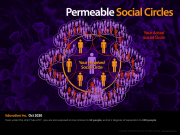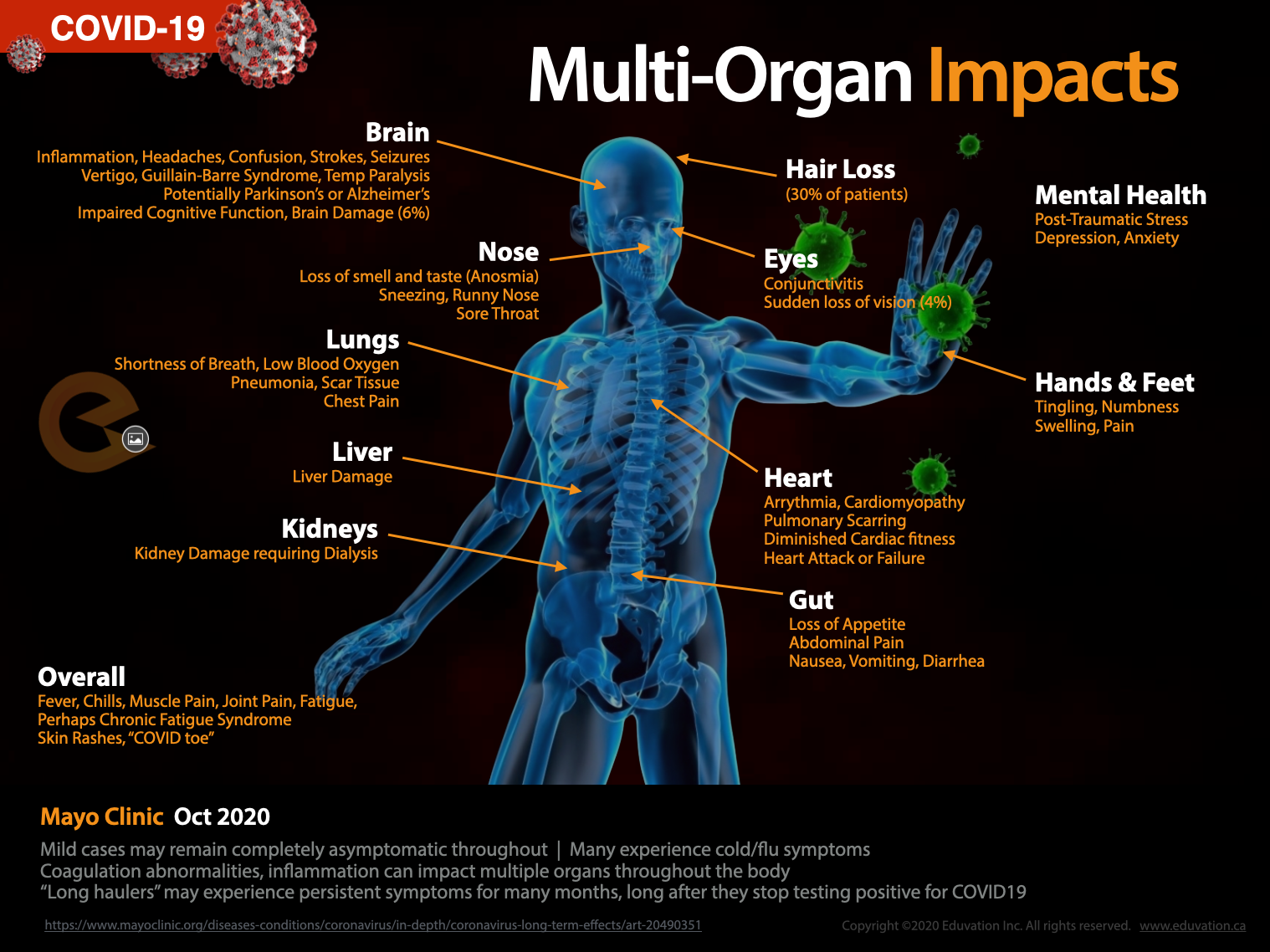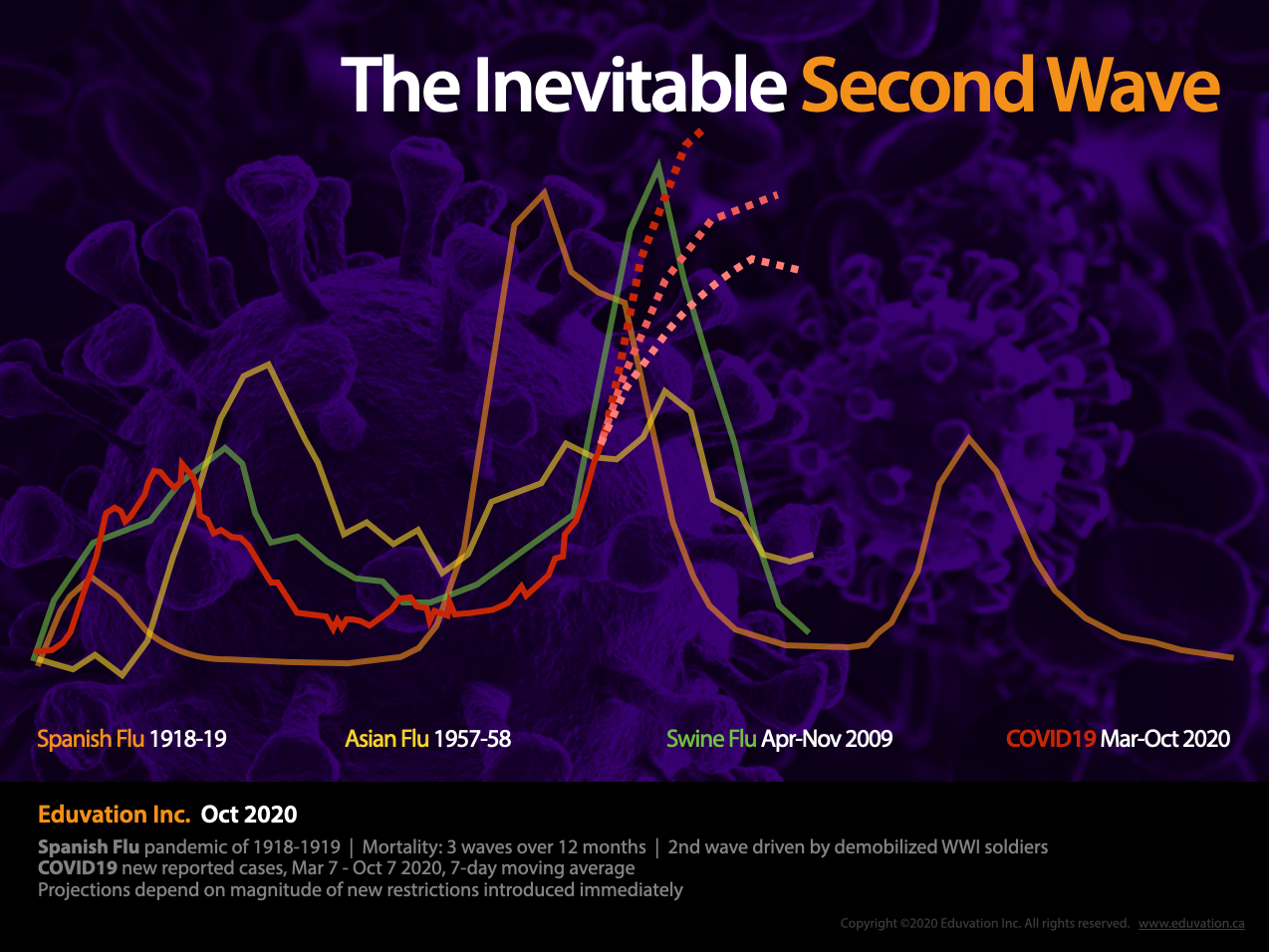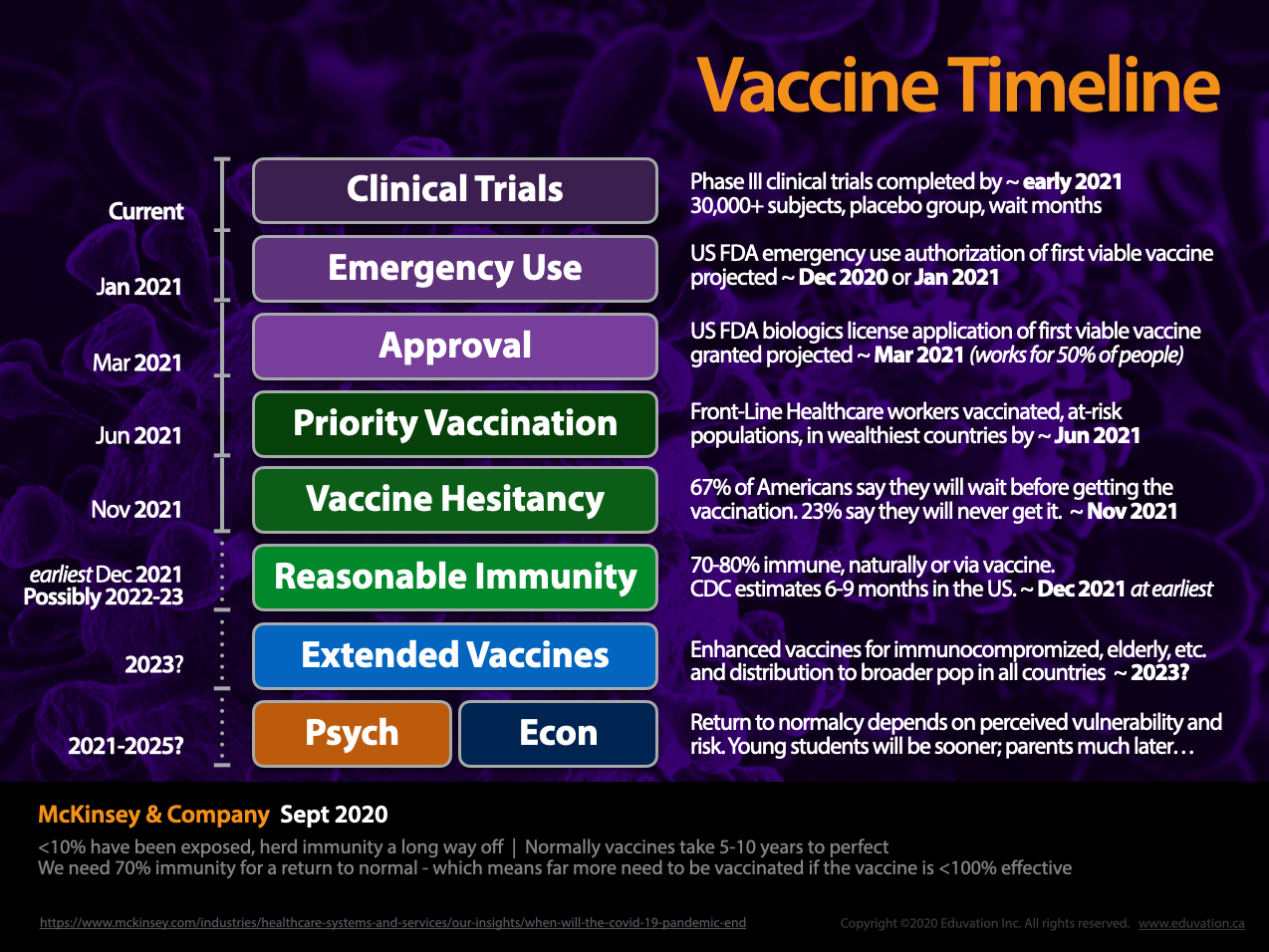Eduvation Blog
Friday, October 23, 2020 | Category: COVID-19, Insider Recap
COVID 101
I remain convinced that there are at least 5 key concepts too many people (including political and business leaders) fail to grasp about COVID19 and the pandemic’s scope. Since a picture can be worth a thousand words, here are 5,000 of them! (Click to enlarge.)
1) Worse Things than Death
Too many people fixate on the death count as the only human cost of the pandemic, but hospital surgeons can tell you about multi-organ failures, young athletes can describe lasting shortness of breath and heart palpitations, and so-called long-haulers are still experiencing symptoms of COVID 7 months after supposed recovery. From cardiac and pulmonary damage to organ failure, seizures and cognitive impairment, this disease is not to be trifled with.
2) The Second Wave is Inevitable
As many have been predicting since March, the northern hemisphere is facing a second wave of the pandemic as it heads into colder weather, just as it did with the Spanish Flu (1918), Asian Flu (1957), and Swine Flu (2009). Most pandemics experience a second or third wave as serious – or worse – than the first. Politicians should have been imposing restrictions on bars, restaurants, gyms, and other potential super-spreader sites in August, flattening the curve as much as possible before the inevitable began, as schools and campuses reopened in September and we headed into flu season.
3) We’re Always 2 Weeks Behind
Monitoring daily case counts is foolish: a 7-day rolling average provides more meaningful data. And policy decisions should be made based on projections, not historical data. Any changes we make to our behaviour – whether opening borders or gyms, allowing larger gatherings or the reverse – won’t show up in the case counts for up to 14 days. The pandemic curve will keep heading in the same direction for weeks after we change course, like a shower faucet that takes a very long time to change the temperature. (And don’t get me started on the perils of announcing a policy change days early: inevitably it causes a surge of bad behaviour before “last call.”)
4) Your Social Circle is Huge
We humans tend to lower our guard around our closest friends and family, and think we can trust them enough not to worry about face masks or maintaining a 6-foot distance. But you can’t say the same about every person in their social circle, or at 2 removes. And even if you adhere to the “rule of 6,” you are already being indirectly exposed to potential infection from at least 250 other people!
5) It’ll be Over… by 2024
The end of the pandemic, and a return to something like “normal,” hinges upon the arrival of a vaccine, but it will take time to get it right. (The average vaccine timeline is 5-10 years. And throwing more labs at the problem can’t eliminate the need to wait for infections, wait for side effects, and wait to see how long immunity lasts.) There are inevitably delays when scientists take proper precautions. (AstraZeneca paused the clinical trial of its COVID19 vaccine in early September, and 2 more vaccine trials by Eli Lilly & Co and Johnson & Johnson have been paused.) Some of the most promising vaccine trials are still recruiting participants – and will be doing so into January 2021. Yes, we will likely see a first-generation vaccine roll out in Q3 of 2021, but it will take another year or two to manufacture and distribute across the planet, and some immunocompromised individuals will remain unprotected until enhanced vaccines are developed. And of course, people won’t go back to normal pre-pandemic behaviours until the psychological echo pandemic subsides.
I hope these visuals help explain the key concepts in a concrete way – but do let me know if you think there are other crucial matters that I should have added here. And let me know if you have spotted a really helpful graphic someplace else, too! Just leave a note in the comments below.
Thanks. Be safe, and stay well!
All contents copyright © 2014 Eduvation Inc. All rights reserved.










